The Universe Was Discovered Here
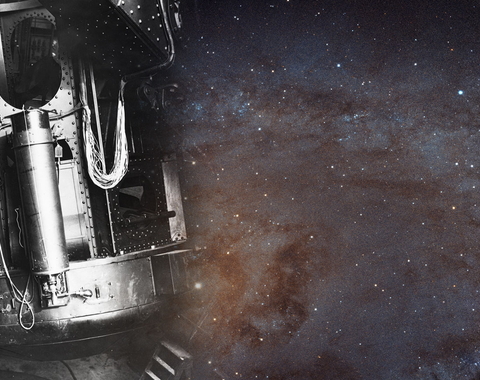
The Carnegie Science Observatories have shaped the history of astronomy over the last 120 years.
From the groundbreaking revelation that the universe exists beyond our galaxy and is expanding ever outward, to the discovery of dark energy, Carnegie Science astronomers have transformed humanity’s understanding of the cosmos. These discoveries, beginning with George Ellery Hale's visionary work and continuing through researchers like Edwin Hubble, have shaped our evolving comprehension of the universe.
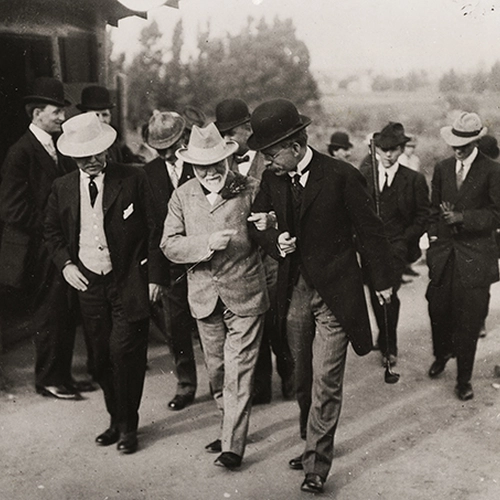
In 1904 George Ellery Hale, seeking clearer skies than existed near his native Chicago, obtained support from the newly formed Carnegie Institution of Washington to found the Mount Wilson Solar Observatory in the San Gabriel mountains near Pasadena, California. Hale was determined to push beyond the descriptive astronomy of earlier generations to understand the internal physics of the Sun and the stars.
“The provision of a large endowment solely for scientific research seemed almost too good to be true,” Hale commented at the time, according to his biographer Helen Wright. “Knowing as I did the difficulties of obtaining money for this purpose and devoted as I was to research rather than teaching, I could appreciate some of the possibilities.”
Since its earliest days, Carnegie Science has sought to support trailblazing scientists like Hale with bold, creative approaches to tackling big questions and grand challenges. It is this same spirit that many of the biggest breakthroughs in Carnegie history were accomplished—from Barbara McClintock’s revelations about “jumping genes” to Vera Rubin’s confirmation of dark matter.
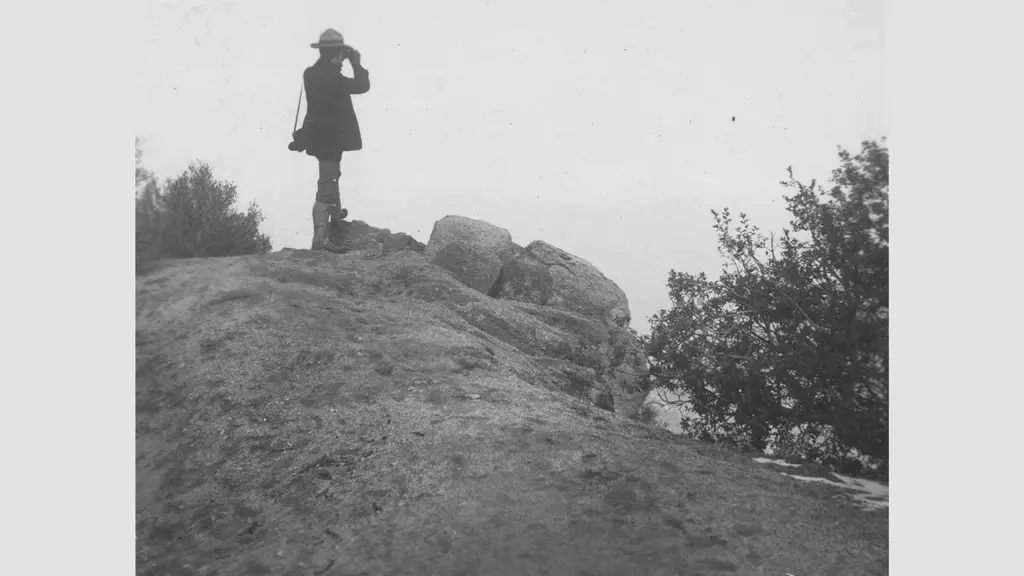
George Ellery Hale at Echo Point atop Mount Wilson, surveying for his proposed observatory, which would be funded by Carnegie Science in December 1904. Credit: Carnegie Science/Huntington Library
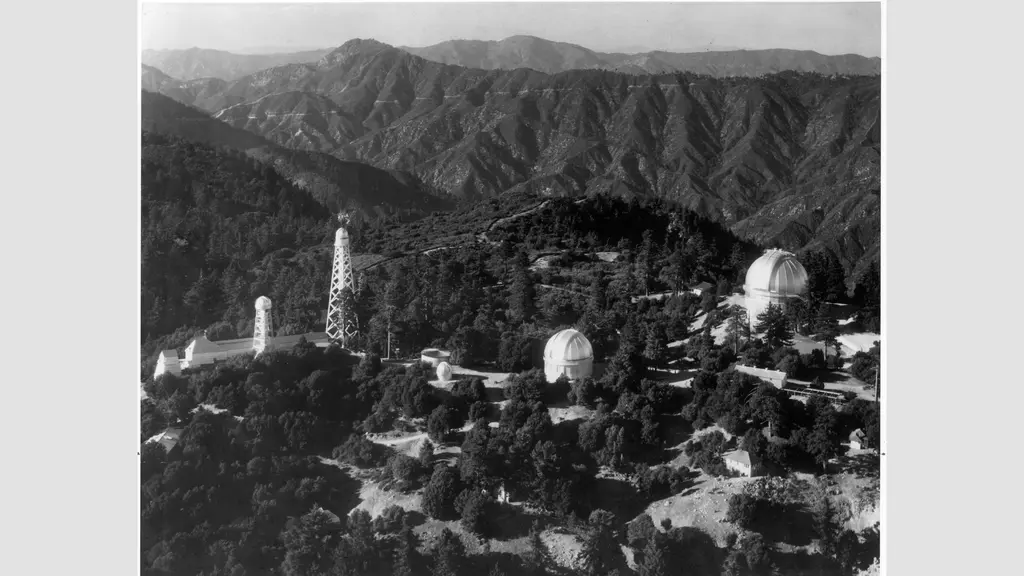
Aerial view of Mount Wilson Observatory in 1932. Discoveries made at Mount Wilson Observatory transformed our understanding of the cosmos – and it all started with George Ellery Hale’s vision. Credit: Carnegie Science/Huntington Library
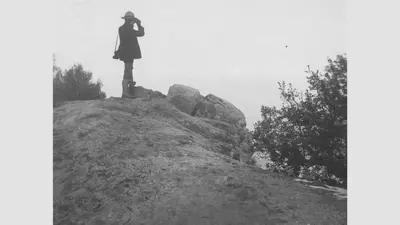
George Ellery Hale at Echo Point atop Mount Wilson
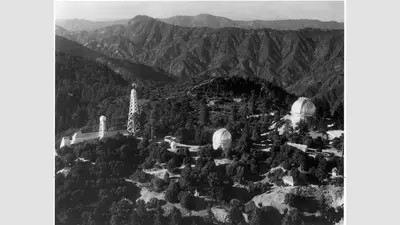
Aerial view of Mount Wilson Observatory in 1932
Through Carnegie Science's sustained support of Mount Wilson Observatory and of Hale’s ever-expanding dreams of seeing further and with greater clarity, he designed and built the 60-inch telescope, which saw first light in 1908; and the 100-inch Hooker telescope, which saw first light in 1917; and the 200-inch telescope at Palomar Observatory, which saw first light in 1949, after his death, and was jointly operated by Carnegie and Caltech until 1980.
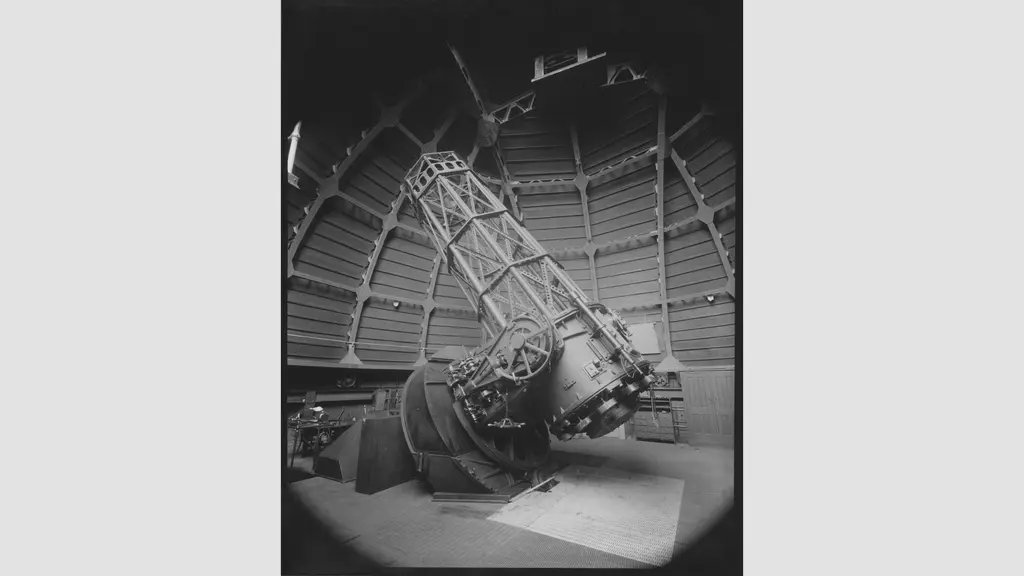
The 60-inch telescope at Mount Wilson Observatory, which saw first light in 1908. From the 60-inch, Harlow Shapley mapped the Milky Way’s globular cluster system and found both its center and our Solar System’s position relative to it. Credit: Carnegie Science/Huntington Library
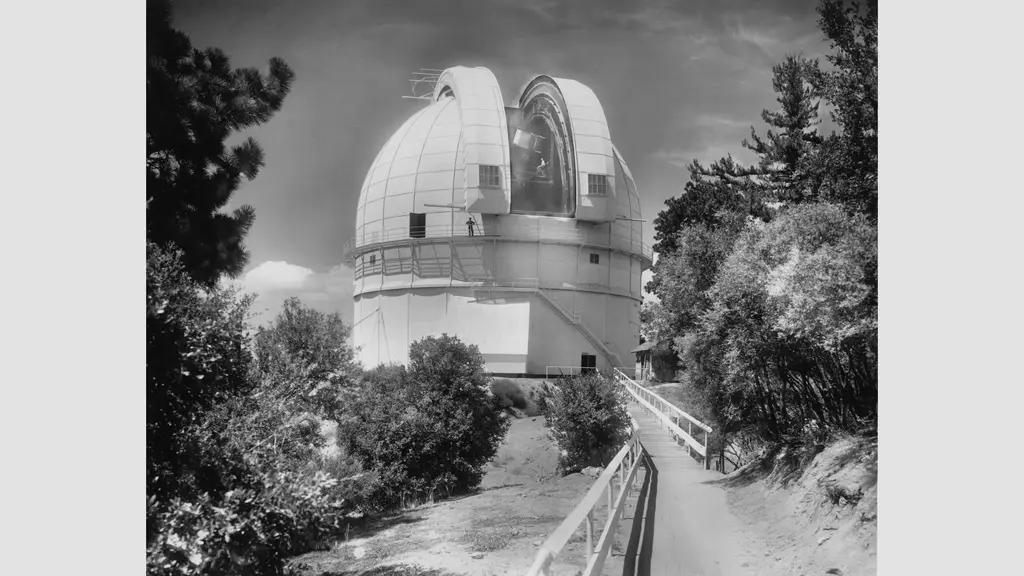
Observatory dome of the 100-inch Hooker telescope at Mount Wilson Observatory, which saw first light in 1917. Legendary astronomer Edwin Hubble used the 100-inch telescope to demonstrate the existence of the universe beyond our own Milky Way galaxy and that the universe is expanding. Credit: Carnegie Science/Huntington Library
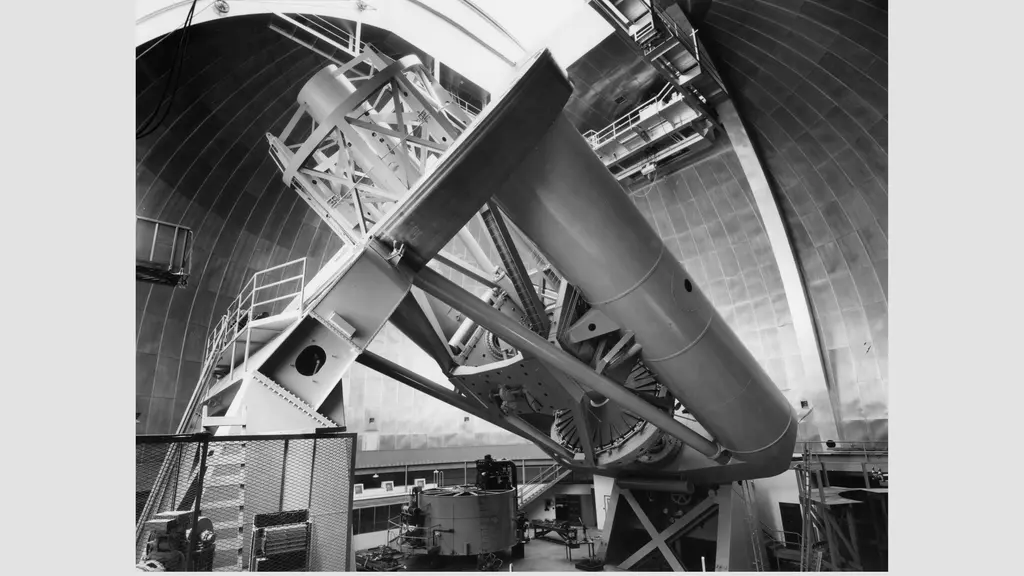
200-inch Hale telescope at Palomar Observatory, which saw first light in 1949 and was jointly operated by Carnegie and Caltech until 1980. Credit: Caltech Archives
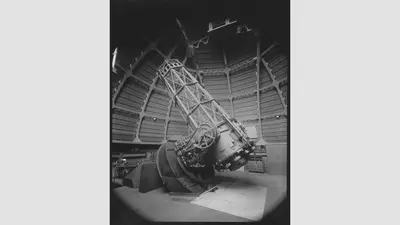
The 60-inch telescope at Mount Wilson Observatory
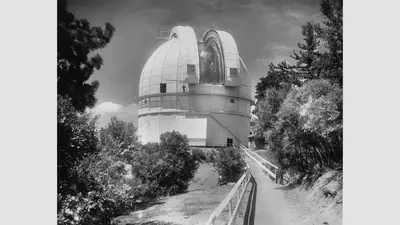
Observatory dome of the 100-inch Hooker telescope at Mount Wilson Observatory
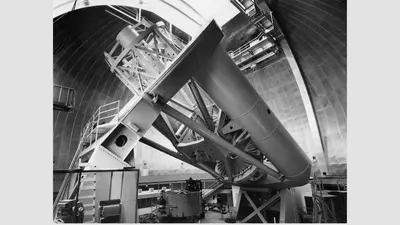
200-inch Hale telescope at Palomar Observatory
It is from Mount Wilson’s 60-inch that Harlow Shapley mapped the Milky Way’s globular cluster systems and found both its center and our Solar System’s position relative to it.
Using the 100-inch telescope, legendary astronomer Edwin Hubble demonstrated the existence of the universe beyond our own Milky Way galaxy—a century ago last October—and went on to show that it was expanding.
Edwin Hubble's Eureka Moment
Edwin Hubble's 1923 discovery of the Andromeda Galaxy’s true nature marks a pivotal moment in the history of astronomy. From a universe limited to the Milky Way, Hubble's work propelled us into a vast cosmos teeming with countless galaxies.
In the early 1920s, the astronomical community was steeped in a lively discussion about the vastness of the cosmos. This disagreement was significant enough to be the subject of a public debate in Washington, D.C., in which astronomers Harlow Shapley, and Heber Curtis verbally sparred over whether so-called “spiral nebulae” were part of the Milky Way or independent galaxies. Hubble’s 1923 discovery definitively answered this question, although it took just over a year for him to report it to the American Astronomical Society.
Hubble’s discovery hinged on finding a Cepheid variable star, which earlier research from Harvard University “computer” Henrietta Swan Leavitt had shown could be used to calculate astronomical distances. By finding such a variable, Hubble knew he could determine the distance of this object. Although often described as reserved or taciturn, Hubble’s excitement at the observation was palpable, using a rare exclamation point to remark on the variable star’s existence, forever memorializing this critical moment in the history of astronomy.
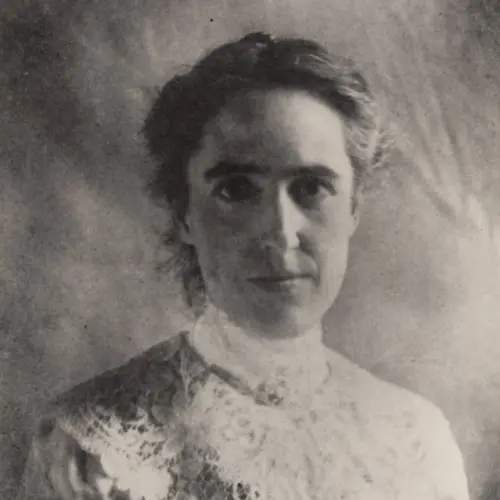
Henrietta Leavitt
Edwin Hubble's ability to determine the distance to the Andromeda Galaxy was made possible by the pioneering work of Henrietta Leavitt, a Harvard computerist. Her research established the relationship between the variable period of cepheid stars and their luminosity. Hubble acknowledged her vital contributions, recognizing that his groundbreaking measurement wouldn't have been achievable without her work from a decade earlier.
Read MoreUsing the Leavitt Law, Edwin Hubble was able to calculate that this variable star existed outside the boundaries of our own Milky Way and was, in fact, part of what we now know as the Andromeda galaxy. This groundbreaking find shattered the prevailing belief in a relatively small cosmos, effectively marking the discovery of the universe.
Hubble would go on to make several more major contributions to our understanding of astronomy, most significantly in 1929 when he showed that the universe is expanding, which led to the development of the Big Bang theory—one of the cornerstones of modern cosmology. Since that time, many astronomers—including some Carnegie luminaries—have honed in on a definitive calculation of the rate of expansion, named the Hubble Constant, in honor of his initial breakthrough.
Edwin Hubble’s work and his historic VAR! plate remains an iconic symbol of humanity's quest to comprehend the vastness of space and continues to inspire astronomers to explore the universe's most profound mysteries.

Plate H335H – Commonly referred to as the VAR! Plate
The letters N mark Novae, stars marked by Edwin Hubble as new when compared with earlier plates. The first Cepheid variable discovered has its letter N crossed out and is marked "VAR!," showing that Hubble initially thought it was a nova, but eventually found that it varied in brightness like a Cepheid.